Kei Tua o te Pae
Kei Tua o te Pae/Assessment for Learning: Early Childhood Exemplars is a best-practice guide that will help teachers continue to improve the quality of their teaching.
The exemplars are a series of books that will help teachers to understand and strengthen children's learning. It also shows how children, parents and whānau can contribute to this assessment and ongoing learning.
We are making improvements to our download-to-print functionality. So if you want a printed copy there are PDF versions available at the bottom of the main cover page.
Stories and symbols of their own and other cultures
-
Te marae

The story so far... Over the past year the kindergarten has been involved in a programme of bicultural development as part of our special focus on biculturalism. During this time the children have been involved in kapa haka and have demonstrated their learning through performances at Te Waitawa House and at the kindergarten for the new entrants class from school. We have also been becoming familiar with a range of Māori stories from the past and te reo me ngā tikanga Māori.
Last year we were fortunate to have our pouako mātauranga, Pip working alongside us at the kindergarten. We had discussed taking the children to visit a marae this year, and then Pip began a new job based at Murihiku Marae. We decided to go for a visit ...
Getting ready
We talked with the children about some of the things they would see and hear on our trip, and the tikanga that would need to be observed on the day.
We listened to a karanga at the beginning of the National Anthem CD and talked about what a karanga is, why it is important and what it says. We discussed not wearing shoes or eating inside the wharenui, and listening to the speeches. We talked about hongi and modelled to the children how to do this. We borrowed a video showing a school group taking part in a pōwhiri at an Otago marae and watched it as a group, then put it on for the children to watch again if they were interested during the session. We looked at photos of different marae. We began to practise “Te Aroha” regularly and talked about how this would be the waiata we would sing to support our kaikōrero (speaker).
We took a bus to the Murihiku Marae and waited in the car park. We were supported by Sheryl, Sonny (our kaikōrero) and Sheree (our kaikaranga). We assembled at the arch and waited. The kaikaranga (caller) for the tangata whenua (local people) began to call us on. We followed Sheree as she answered and led us up to the wharenui (large meeting house).

When the karanga was finished we went up to the wharenui, took off our shoes and went inside and found a seat. It was wonderful to see Whaea Pip sitting with the tangata whenua. We listened to the whaikōrero (speech) and waiata (song) of the tangata whenua and the reply by Sonny on our behalf. Then it was time to line up for the hongi.
We went through to the wharekai (dining room), where we had a delicious morning tea after listening to the karakia kai. Afterwards we went up on stage and put on a performance for the wera ringa (kitchen workers), with Whaea Pip playing the guitar for us.
We went back into the wharenui and Whaea Peggy told us about the inside of the wharenui, the poupou (carvings) and tukutuku panels on the walls and what some of them stood for.
She explained that these are like photographs we have in our houses and remind them of their ancestors. Then the children did some colouring in of bird outlines with Māori designs while Whaea Peggy talked to the parents about the significance of the rest of the poupou and tukutuku.
We had some time left before the bus came back to get us so we went outside to play some games before singing “E Toru ngā Mea” to Whaea Pip and Whaea Peggy to thank them for letting us come to visit.

The teaching
The teachers have used describing, demonstrating, reading, singing and instructing as strategies for preparing for our trip to the marae. They have used documentation as a tool for co-constructing (forming meaning and building knowledge about the world around us with each other).

The learning
The children are gaining knowledge about the stories and symbols of the Māori culture and making meaningful connections between the songs, language and stories they hear at kindergarten and a marae. The children are learning about the dual cultural heritage of New Zealanders. This enhances their linguistic development and their understanding of their world.
-
Sofia the reader
-
8 August
Pamela has told me about how much Sofia loves her books. They go to the library on a regular basis and Pamela reads to Sofia often.
Today when I went to visit Pamela and Sofia, I was able to see this for myself.
Sofia was sitting near her basket of toys and began to take some out. She chose books and there were quite a few in there. She didn’t just take the first book though. She looked through each one until she came to the one that she wanted, which was Thomas the Tank Engine. She then proceeded to open the book in the correct way, the right way up, and to turn the pages from left to right! She also pointed to some of the pictures and made some sounds.
When she had finished that book, she did the same thing again and chose another story, Brown Bear, Brown Bear. It wasn’t the first book she saw either.
It was great to watch Sofia reading her stories and revisiting experiences that she has had. It is wonderful for such a young child to be so interested in books and show such an understanding of the way that they work.
We know children are learning when we see them practise old things and take an interest.
Sofia enjoys returning to her favourite books and the enjoyment that they bring. (Te Whāriki, Communication/Mana Reo.)
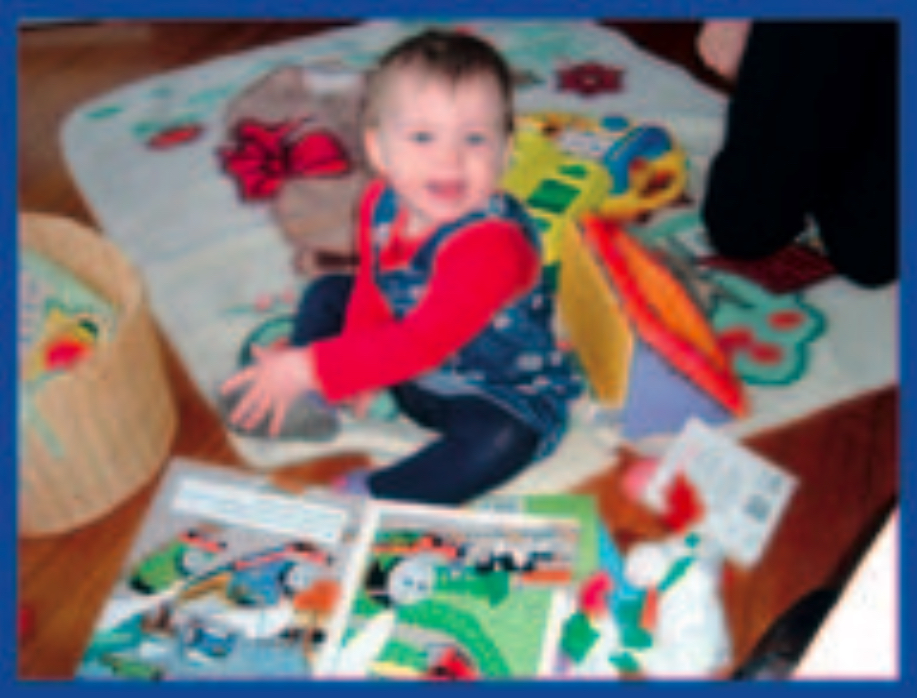
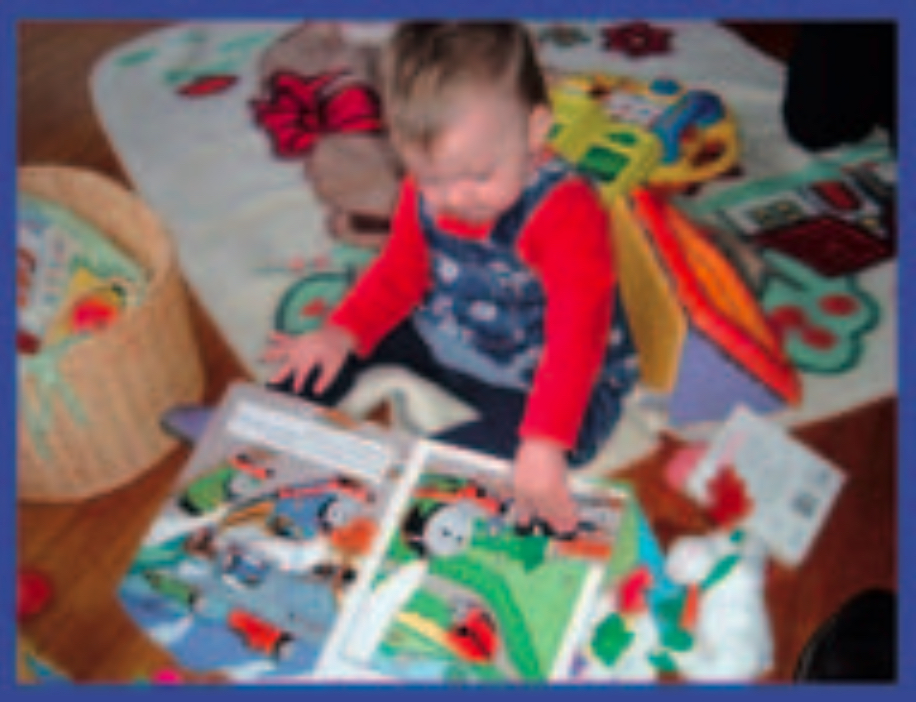
-
-
Phoebe’s puzzling morning
-
The busy puzzling morning – Part 1
Phoebe often enjoys setting herself the task of solving puzzles. Today she carefully tips out an interesting puzzle that shows lots of pictures about te ao Māori – the Māori world. She turns the pieces over and then is soon absorbed in studying the features of the puzzle. She holds up a comb piece and puts it into the appropriate place, commenting to Ann that she has combs at her house. As she selects hei tiki she wrinkles Phoebe is keen to work from left to right today and sifts through the pieces remaining on the floor for the two fish-hook pieces (hei matau). She holds them up to show Ann, one in each hand. Ann smiles and tells Phoebe she has noticed that Phoebe has chosen two matau for her puzzle – two fish hooks. Ann shows Phoebe the pictures of hei matau on our kindergarten walls and she laughs – “They’re the same! What are they for?” Ann replies that they could be used for fishing – or worn like a necklace – some are made of bone and some of greenstone.
Phoebe nods and says that she likes the colours and the green one on the wall is “sort of swirly” and Ann agrees the photos show how the milky white one is shiny and the green one is a bit more “see-through” than the puzzle shows us.
She explains to an engaged Phoebe that if these sorts of carvings are worn a lot, they absorb oils from your skin and are supposed to take on some of the special spirituality of the person who wears them. She goes on to show Phoebe that some of them are decorated her nose in perplexity and wonders what this one could be? Ann talks about the tiki – how it is often made of pounamu (greenstone) and is worn as a necklace. She talks about how the tiki is special. Phoebe is very pleased with this and confides that she wears necklaces sometimes and they are at home.
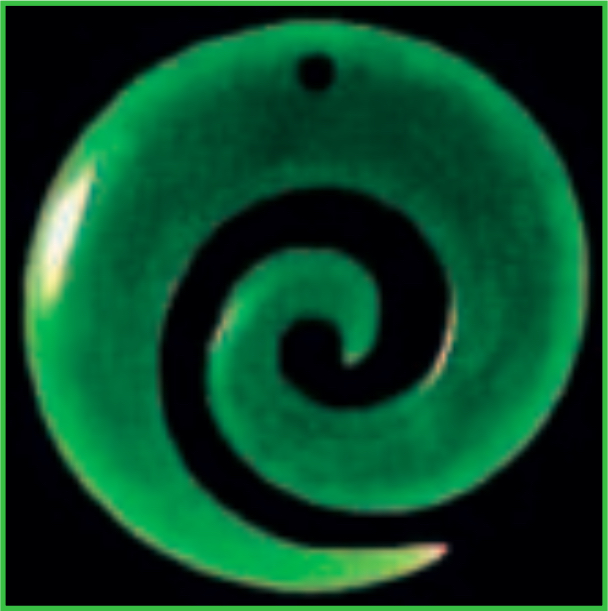
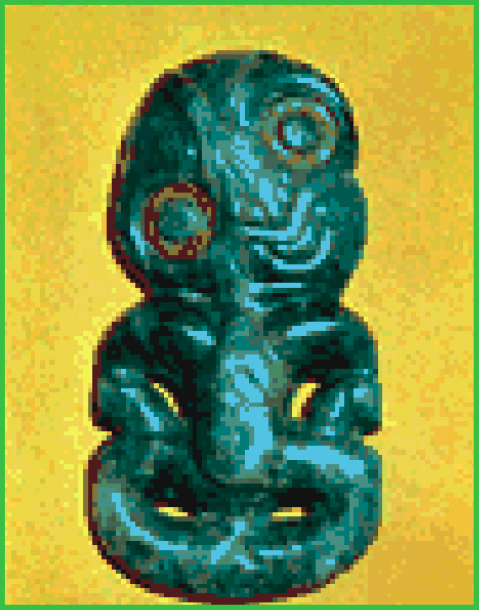
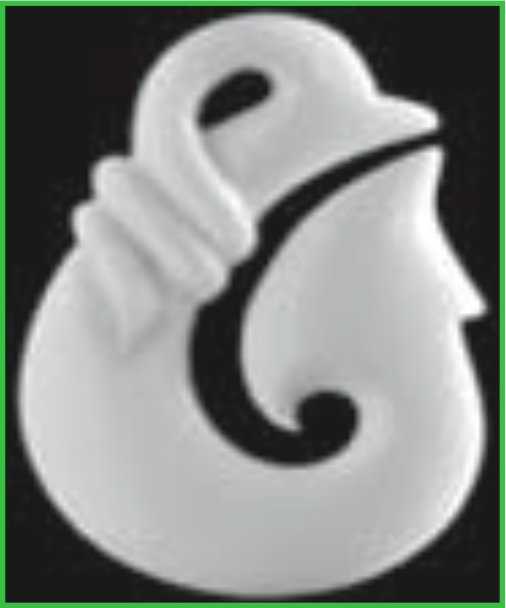
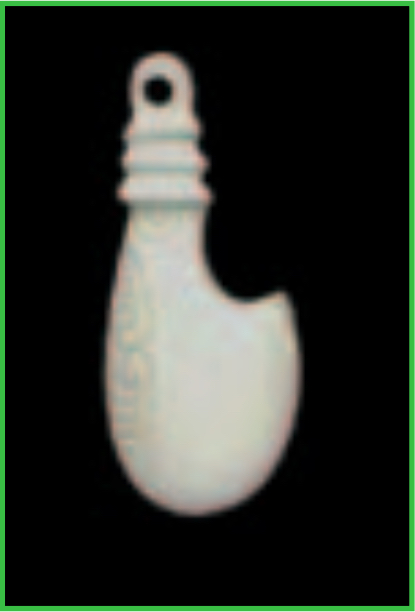
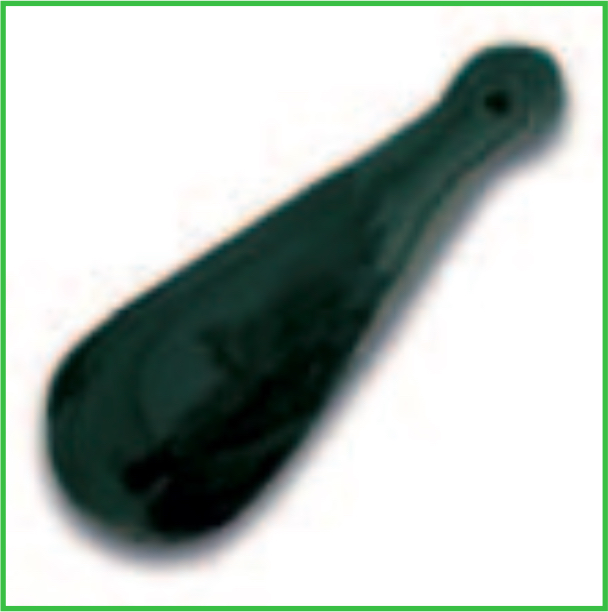
Phoebe is keen to work from left to right today and sifts through the pieces remaining on the floor for the two fish-hook pieces (hei matau). She holds them up to show Ann, one in each hand. Ann smiles and tells Phoebe she has noticed that Phoebe has chosen two matau for her puzzle – two fish hooks. Ann shows Phoebe the pictures of hei matau on our kindergarten walls and she laughs – “They’re the same! What are they for?” Ann replies that they could be used for fishing – or worn like a necklace – some are made of bone and some of greenstone.
Phoebe nods and says that she likes the colours and the green one on the wall is “sort of swirly” and Ann agrees the photos show how the milky white one is shiny and the green one is a bit more “see-through” than the puzzle shows us.
She explains to an engaged Phoebe that if these sorts of carvings are worn a lot, they absorb oils from your skin and are supposed to take on some of the special spirituality of the person who wears them. She goes on to show Phoebe that some of them are decorated to show respect for the sea and its creatures. Phoebe comments that it looks beautiful and returns to the task at hand. She puts the toki poutangata – the ceremonial adze – into place and then scans the walls for one like that. “Look there’s one!” and Ann agrees that Phoebe’s careful eyes have found another toki poutangata for digging or making the houses or waka. Phoebe puts in the last shaped piece and stops to look at it closely. “That’s funny – what do you do with it?” Ann tells her that the wahaika is a club or a weapon that important Māori chiefs would have used in the old days when fighting a war or defending themselves, but these days it is worn to symbolise trying hard at something that is tricky – like solving puzzles! Phoebe says “I am nearly finished my puzzle” and sets about placing the words in by trial and error to find where they will fit.
Phoebe puts the last piece in, grinning from ear to ear, and notices that Ann has the camera sitting next to her. “I worked hard,” she confides to Ann – “I’ll take a picture of this puzzle.” Ann reminds her how to look at the screen and push the button, which she does.
What learning was happening here?
Phoebe you have taken an active interest in artefacts of Aotearoa that were unfamiliar to you. You showed some interesting strategies to make sense of the visual and auditory information you were interacting with. You could make links between things that were the same at home and at kindergarten. You could compare what was the same and what was different. You used great skills to engage further with this interest – asking questions, listening closely and explaining your perceptions using descriptive language. You engaged with the task that you set yourself and demonstrated an awareness of the value of finishing it by commenting about this and documenting the finished product with a photo. The photo is great! As you were exploring commonly found traditional artefacts, you were demonstrating a developing sense of yourself as part of New Zealand’s bicultural nation.
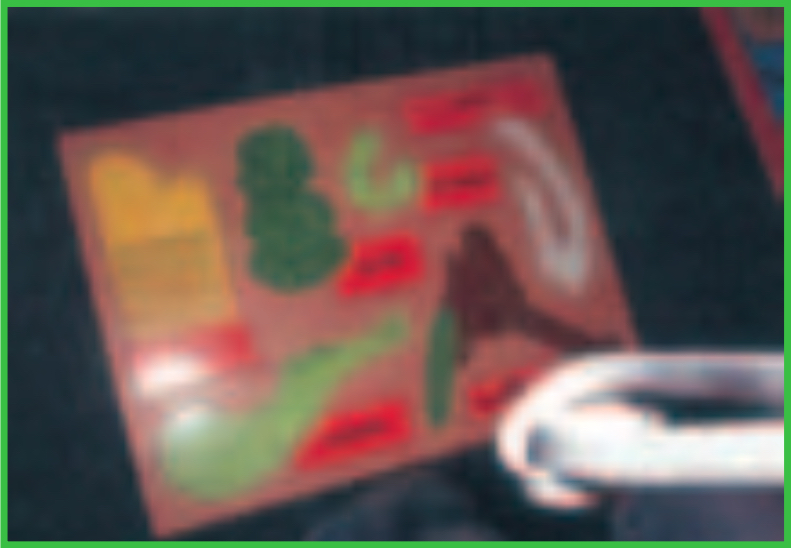
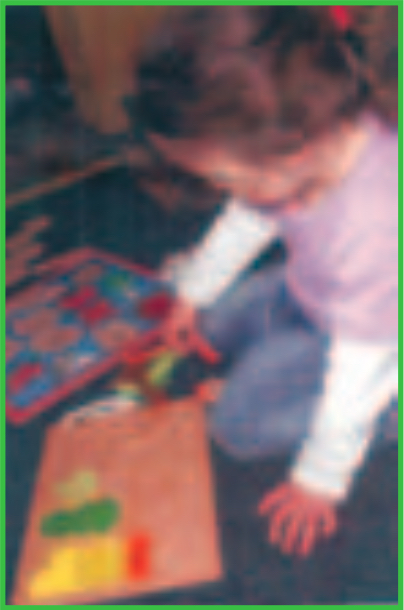
The busy puzzling morning – Part 2
Phoebe is having a “puzzling” morning today!
She replaces her taonga Māori puzzle on the shelf and selects herself a puzzle with an array of people pictured. She tips all the pieces out and turns them over – looking at the pieces very carefully. She begins to group the people on the carpet outside the puzzle frame in twos and threes – matching a male and female and then adding one other to the pair – usually a child. When they are all allocated she studies it and then moves some around. When satisfied with her sorting, she begins to replace them in the frame – making assumptions about where they might fit and using trial and error strategies to find the corresponding hole if it didn’t fit ... and then she takes a photo of it when it is finished!
She then gets out a puzzle she has been working on a lot this week – on her own, with the teaching team and with Charlotte – depicting lots of vegetables. “These are healthy,” she comments to Ann as she sets about taking out the pieces, one vegetable at a time, until she has three out each time. She then sets about reassembling the removed vegetables upside down on the carpet. Each vegetable has three pieces and she assembles them all face down – which was quite tricky! Sometimes she peeks at the face of a piece to help her, and sometimes she looks at the hole in the frame to give herself some clues.
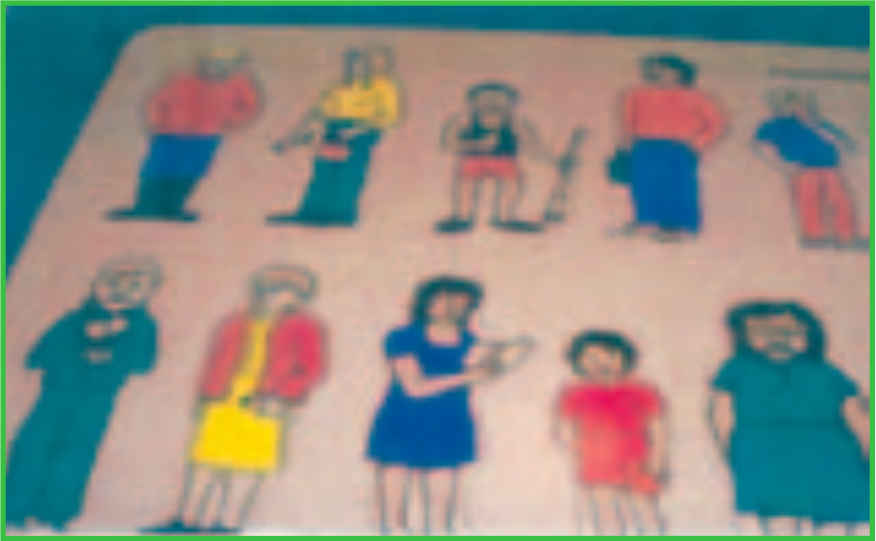
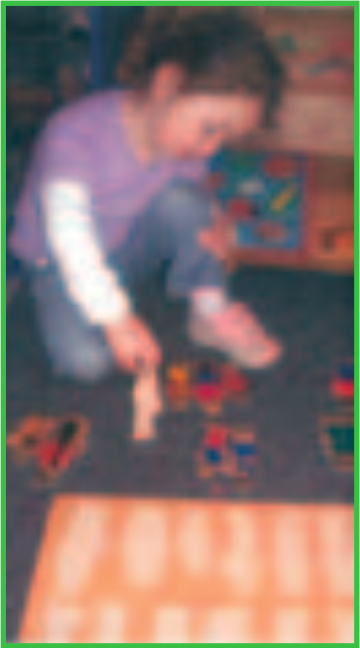
What learning was observed today?
Phoebe is using a wide range of criteria to sort and compare information as she takes great interest in the subject matter being depicted and makes the decisions required to solve puzzles. She defines her own criteria and organises the pieces based on shape, subject matter and family groupings. She is using a lot of her prior knowledge to assist her in this work.
Phoebe is practising her skill in making spatial judgments in this fine motor activity and is gaining confidence and accuracy. Phoebe you worked very hard today!
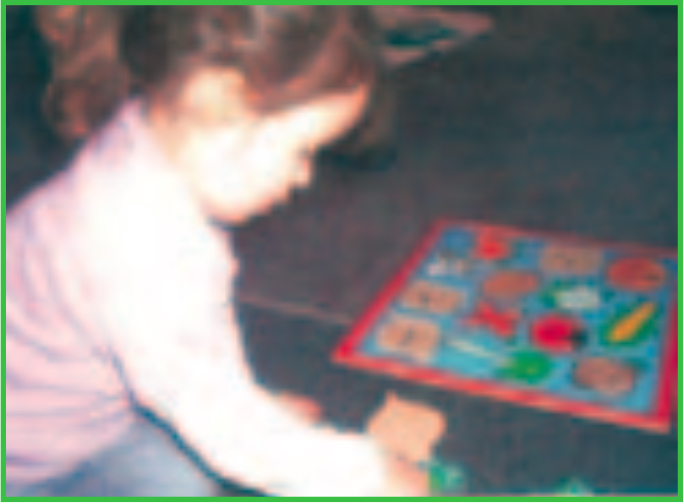
-
